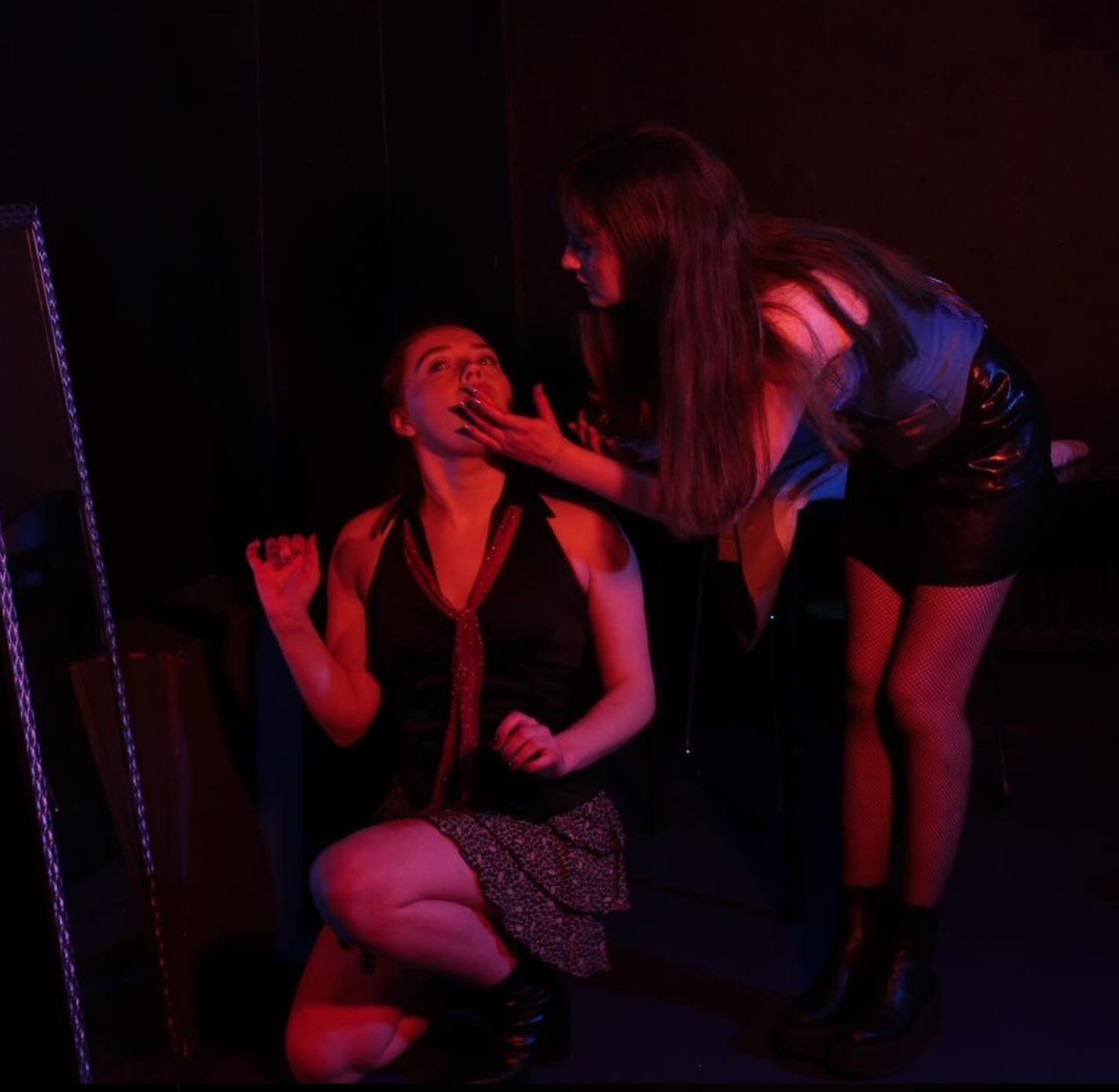Let’s party like it’s 1989! A new decade is on the horizon as we follow Barbara, who waltzes into Dublin’s hottest jazz bar, the Meeting Room. I say we, because the audience found ourselves in the bar alongside the cast. With neon signs, live piano music and laminated cocktail menus, the immersive set design transports audiences away from the Samuel Beckett theatre, where Pinstripe was showing February 21st-23rd.
Through the sultry, at times tense atmosphere of the Meeting Room, Lucy Bruton and Caoimhe O’Farrell’s interactive play expertly recreates the magical allure of the stage itself. To guide us through the night was a bubbly waitress, the eccentric and ambiguously French owner Elaine Perrier (Noella Ngilinshuti Ntambara), and an uptight manager, dedicated to ensuring the tone of the performances as well as the audience’s enjoyment.
The costumes (Moira Gill) didn’t disappoint either: all silks and sequins, blacks and reds, big hair and campy bows; and, of course, pinstripe. As the audience settled into their seats, they might have overheard a few whispers between the bar staff, or had one of the Meeting Room’s performers try to network their way into a handy industry connection.
The main character was Barbara (Amy Callery), a young girl dreaming of moving to London or New York to make it as a dancer. She’s pretty, talented, and has poured her whole heart into this dream. Callery’s performance skilfully oscillated between comedic and affecting: The arrival of her loving but unsupportive boyfriend (Ben Sullivan) came as a jarring interruption to the night’s entertainment, but gave her character arc more depth as his doubts inserted an intriguing dimension of conflict. As these difficult questions loomed large over the scene, the action of the play began to veer away from the boundaries of time and space, as we were transported into Declan and Barbara’s kitchen, eventually finding ourselves cast aside, as if the matters at hand had grown to transcend the physical limits of the present moment.
A notable moment was an encounter towards the end of the play between Barbara and an older woman, whose dancing days were far behind her. Barbara’s realisation that following her dreams could also mean honouring those dancers who came before her and had less agency proved pivotal. Pinstripe closed with a moving dance scene to the tune of Enya’s Orinoco Flow.
“The idea of two separate, ordinary events gradually bleeding into each other was powerful”
Returning to the interactive element, the audience were split into two before the show and only one half were escorted into the Meeting Room, while the other were led into a part of the set that remained out of my sight for most of the play. One side could hear them, but until Declan burst into the bar, didn’t get a chance to watch. Were there other important characters? Was Declan telling his side of the story? Asking these questions, I couldn’t help but feel as though I missed a part of the play, yet the idea of two separate, ordinary events occurring in different places and gradually bleeding into each other was powerful. Overall, the level of the production, the cast’s range, and the set design were thoroughly impressive – I would have gladly gone back to see what was happening on the other side.






